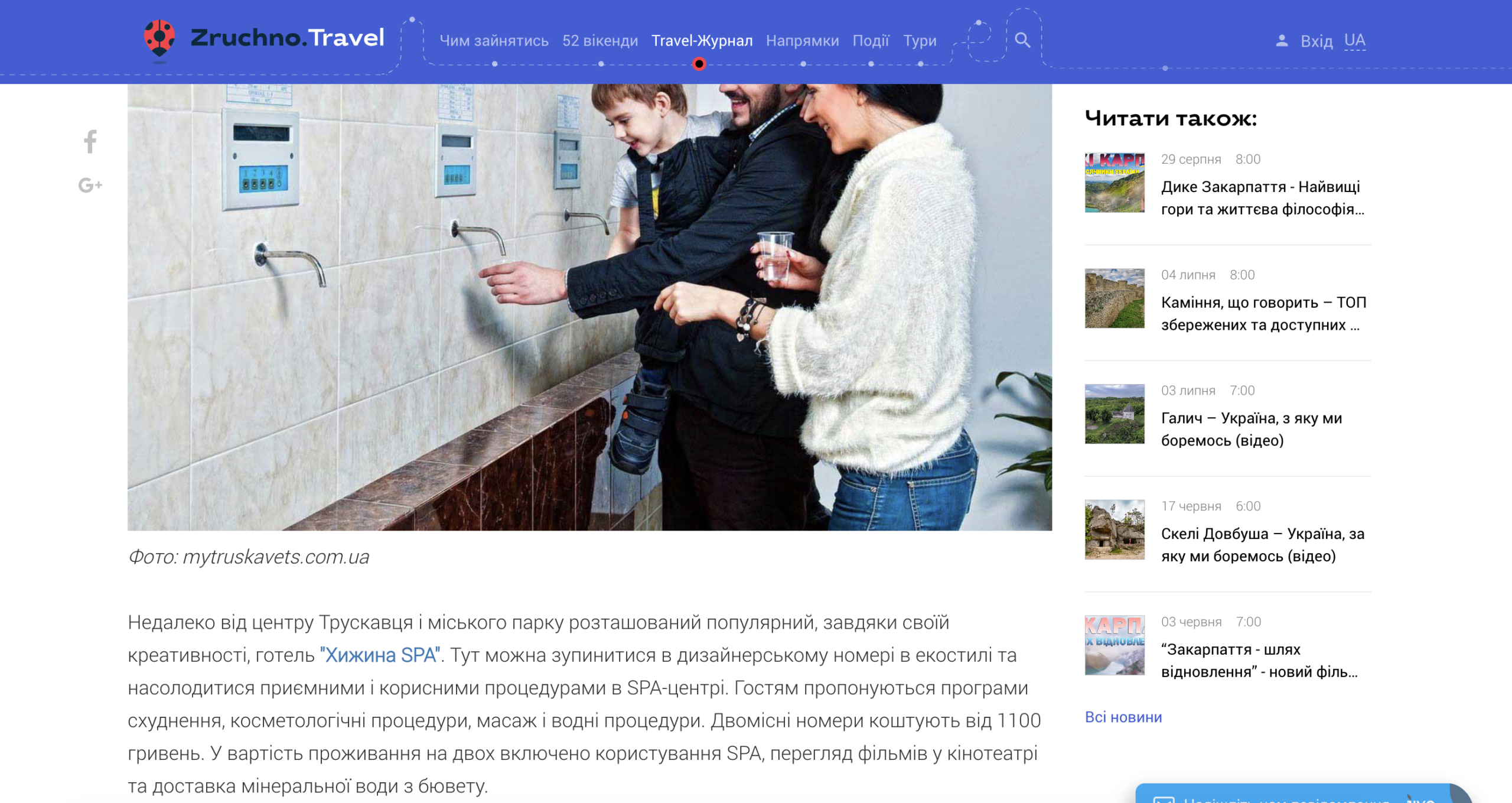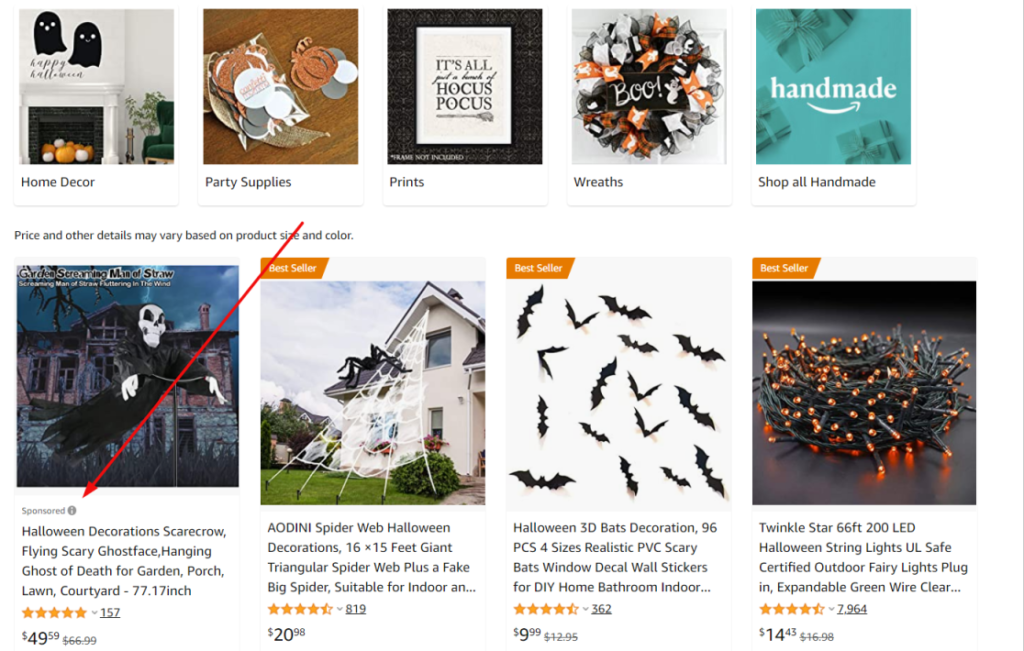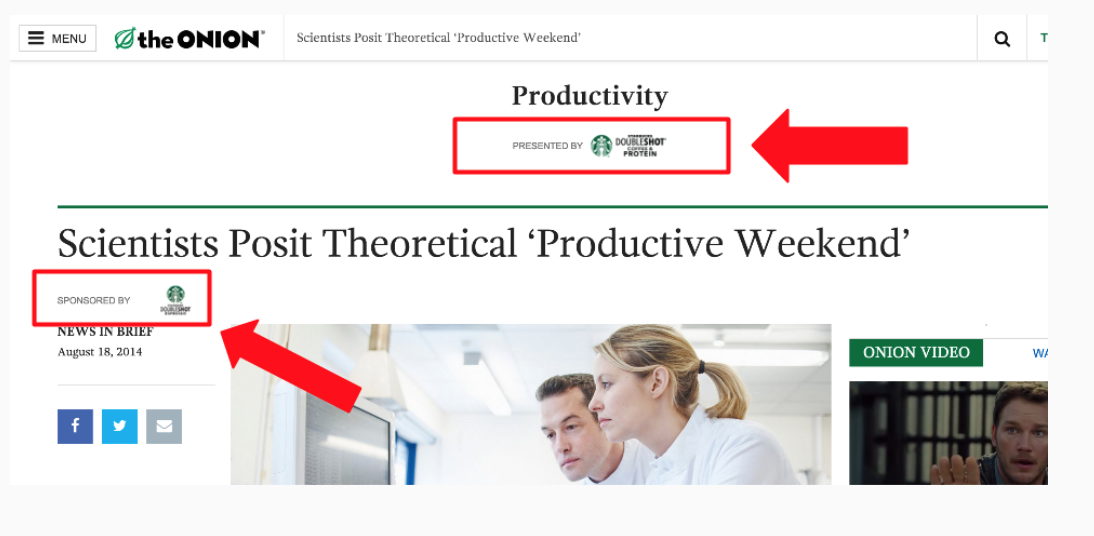Content of the article

Native advertising is a special type of advertising content that organically integrates into the environment of the platform on which it is placed and gives users the impression of a natural part of the content.
The basic idea of native advertising is to reduce consumer resistance to advertising by increasing their interest and engagement by creating content that not only attracts attention, but also provides useful or entertaining information.
A typical example of native advertising is an article, video, or post on social networks that looks like normal platform materials, but at the same time contains unobtrusive advertising information or emphasizes the benefits of a product or service.
Such advertising is quite effective, as it not only attracts the attention of potential customers, but also promotes engagement and interaction with the brand.
Who should use native advertising and when?
Native advertising is not necessary for everyone and not always. So, let’s figure out when it is relevant to invest in this type of marketing?
- Limited marketing budget
Due to the high level of interaction and the possibility of obtaining a higher CTR compared to display, native advertising allows you to significantly reduce the cost of attracting users.
A higher click-through rate results in a lower cost-per-click, as advertising is often purchased on a cost-per-thousand-impressions (CPM) basis. Even if users need more time to read content or fill out a form, a reduced cost-per-action will allow you to optimize your advertising budget without losing campaign effectiveness. - Add brand recognition
When it is necessary to quickly convey information to a wide audience, native advertising becomes an indispensable tool. Search engine optimization (SEO) takes a long time to achieve visible results, native advertising allows you to distribute content much faster.
This is especially useful for campaigns that have a limited time to achieve results and need an immediate increase in audience reach. An example of such an approach can be the rapid attraction of new customers through advertising materials that look like ordinary content of the platform.
Native advertising is an effective and economical solution for various types of advertising campaigns and organic interaction with the audience.
Advantages of native advertising
Let’s consider the main advantages of using native advertising materials.
- Does not accept AdBlock
AdBlock is a free browser extension widely used to block advertising content, especially banner ads. This extension can significantly reduce the visibility of traditional ads, which reduces the effectiveness of advertising campaigns. Native ads have an advantage because AdBlock doesn’t recognize them as ads. Because native content looks like regular platform content, it remains visible even to users with AdBlock installed.
Example: on the Ukrainian news portal, you can find an article that talks about the benefits of organic food products, and inside it unobtrusively mentions a local chain of health food stores. This article is not blocked by AdBlock and provides readers with useful information while drawing attention to the brand without looking like an advertisement.

- She is trusted
Native advertising is integrated into the context of the platform in such a way that it is perceived as a natural part of the content, which increases the level of trust in it. Traditional advertising can cause mistrust due to its intrusiveness, native content provides useful information or entertainment.
Example: the Ukrainian company CHOICE, which produces environmentally friendly cosmetics, publishes an article on the popular women’s blog about the importance of natural ingredients in hair care. At the end of the article there is a link to their products. Users perceive this information as expert advice rather than direct advertising, which increases their trust in the brand.

- Does not fall into the zone of “banner blindness”
Banner blindness is a phenomenon where users unconsciously ignore banner ads due to their intrusiveness and repetitiveness. Native advertising has the advantage of being part of organic content, which makes it less visible as an ad and more engaging.
Example: the Ukrainian travel blog Zruchno.Travel published an article about the most interesting places for recreation in the Carpathians. The text unobtrusively mentions a local hotel that offers tours and discounts on accommodation. Readers perceive this information as useful advice rather than advertising content, which greatly increases the effectiveness of advertising.

- Flexible and multi-channel
It can be used in different formats and on different platforms such as social networks, blogs, news sites and video platforms. Natyvka easily adapts to different types of content and is suitable for many communication channels.
Example: the brand New Balance, which is engaged in the production of sports shoes and clothing, commissions videos on YouTube with a review of their sneakers, where the author of the channel talks about the different models and the features of each. At the same time, the company publishes an article on the blog about sports and healthy living, which contains links to their products. In this way, the brand reaches different platforms and audiences using the same ad content that looks organic.

- Does not look like direct advertising
Native advertising differs from traditional advertising in that it does not look like direct advertising, but is perceived as part of the main content.
Example: Ukrainian cultural portal “New Ukrainian Cinema” publishes a review of a new film created by a Ukrainian director, with an emphasis on the historical events described in the film. The article contains a link to a site where you can watch this film. Readers perceive this content as cultural information rather than direct advertising, leading to a more positive perception and desire to learn more about the product.

Disadvantages of native advertising
In general, we can single out 2 disadvantages of native advertising.
1. It takes time and creativity to create quality content that not only integrates into the platform, but also attracts attention and engages the audience.
This means that it is necessary to develop content that is relevant, informative and interesting, but at the same time unobtrusive. This task is quite difficult, because the content must meet the expectations of the audience and be useful. This requires a specialist with a high level of creativity and professional skills.
Quality native advertising should not be perceived as direct advertising. It should harmoniously fit into the content of the platform. This can be writing articles, creating videos, infographics or other content formats that match the style and tone of the platform.
Example: if the advertising material is to be placed on a site with culinary recipes, then the native content can be in the form of a recipe using products of a certain brand. At the same time, the content should be so interesting and useful that users do not perceive it as advertising.
Another example: suppose that a Ukrainian producer of natural juices wants to promote its products through native advertising. For this, the company can create an article on a popular Ukrainian blog about a healthy lifestyle, which will talk about the benefits of fresh juices for health, as well as give several recipes for cocktails using juices of this brand.
Creating such an article requires a high level of knowledge in the field of healthy nutrition, as well as the ability to interest the reader and provide him with useful information.
There is always the risk that even well-prepared content may not meet the expectations or interests of the audience, reducing its effectiveness. If an article on a car news site contains native advertising for home appliances, it may not resonate with readers and cause a negative reaction.
2. Native advertising does not always guarantee a high level conversions, and in some cases, the costs of its creation and placement may not pay off.
If the target audience is not interested in the content or if the content is not relevant enough for the users, then the advertisement may not bring the expected results, leading to financial losses.
Native advertising, although a powerful marketing tool, requires a creative approach to create and post quality content, and sometimes that doesn’t work.
The main formats of native advertising
Native advertising exists in various formats, each of which has its own characteristics and approaches to the integration of advertising content into the main flow of information.
- Publications in the news feeds of social networks, which are disguised as ordinary user posts or pages to which the audience is subscribed. This type of advertising fits harmoniously into the news feed and can include text posts, images, videos or even polls, creating the effect of ordinary content. An example of such advertising can be seen on Instagram, where the ad appears among regular posts and is distinguished only by a small mark “Paid by a sponsor”.
- Post-article or “Read Also” recommendations, which usually appear at the end of articles on news or information sites. These recommendations can be either editorial or sponsored content that prompts users to view promotional materials that are integrated as part of the editorial content.
- Listings are another native advertising format often used on classifieds or product sites. They are placed among ordinary listings of goods or services and look like part of ordinary content, while pushing users to choose the advertised product.
Let’s consider an example. On classifieds sites, you can see ads that are at the top of the list and look like regular ads, but with a little labeling to indicate that they are advertising. Such an example demonstrates how native advertising can be effectively integrated into the context without distracting the user from his main goal. - Sponsored content is one from the most complex and at the same time effective formats of native advertising. This can be articles, videos, podcasts or any other content that is created in collaboration with the brand and reflects its values or products. Sponsored content is usually integrated into the media so that it does not stand out from the background of the main editorial material, and aims to provide useful and interesting information to readers or viewers.
A good example: an article about new trends in the field of ecological transport can be paid for by the manufacturer of electric cars, while providing useful information about the advantages of electric vehicles and unobtrusively promoting the brand.
All of these native ad formats help create content that is both useful and engaging for audiences, ensuring effective brand promotion without directly interfering with the user experience.
Features of successful native advertising
It’s not enough to simply create and pay for native ads. It will take effort, creativity and money to make it work. What should you pay attention to when you plan to launch native advertising? Consider below.
- Choose the right format
In order for native advertising to be successful, it is important to choose the appropriate format that best suits the platform and audience.
Example: on social networks, posts in the news feed work better, while on news sites, post-article recommendations or sponsored content can be more effective. This choice of format determines how organically native advertising is integrated into the content and attracts the attention of users. - Work on the visual
Visual appeal is a key element of successful advertising. High-quality images, videos and graphic elements should be harmoniously combined with the content of the platform where the advertisement is placed. This helps to attract attention and hold the interest of the audience.
Example: bright and creative images in the news feed of social networks or well-designed infographics on informational sites can significantly increase the effectiveness of advertising. In the case of native advertising, it is important that the visual elements look natural and do not create the impression of intrusiveness. - Choose the right placement
The placement of native advertising is of great importance to its effectiveness. A well-chosen platform and site section can significantly increase the chances that the ad will be noticed and lead to the desired action.
Example: placing an ad on popular blogs or sites with high traffic increases the likelihood that users will find it interesting and useful. It is important to consider the context of the platform and how the advertising content is relevant to the interests of the audience.
Take these points into account, and then you will be able to create native advertising that is organically integrated into the content and will ensure a high level of user engagement.
Examples of successful native advertising
Let’s consider examples of successful options for integrating native advertising into content.
1. In movies and series
In the film industry, native advertising is often used to unobtrusively promote brands. Such an example is the films about the legendary agent 007 – James Bond.
In each film of this series, you can see the exquisite car brands such as Aston Martin, BMW and Land Rover, which have become a prominent part of his image. Also, products of alcohol brands such as Heineken and Martini appear in the films.
This use of native advertising helps brands stay in the spotlight, and the audience does not even notice that the ad is in front of them, because it is organically woven into the storyline.

2. Amazon uses listings to promote similar products
The Amazon marketplace is one of the best examples of using listings in native advertising. When users search for a specific product, the platform offers them similar products or products from sponsors in the form of recommendations based on their previous searches and preferences.
Example: if you’re looking for a smartphone, Amazon may show you other models or accessories from sponsors that meet your needs. This ad format looks like a normal part of search results, so users often don’t perceive it as advertising, which makes it effective and unobtrusive.
Rozetka, Comfy, Foxtrot and other popular online stores and marketplaces work according to the same principle.

3. Articles
In 2014, an article titled “Scientists Posit Theoretical ‘Productive Weekend'” was published on the American online resource The Onion. This post looked at weekend productivity and the effects of coffee on the human condition. This article was sponsored by the largest chain of coffee shops Starbucks, which promoted its new product Doubleshot Espresso. This is a great example of native advertising, where the article does not just promote the product, but organically weaves it into the content of the material, making it useful for readers. Starbucks used this format to communicate its target audience, how their product can help improve performance.

To summarize
Native advertising is an effective marketing channel, and efforts must be made to create it in order for it to bring the desired results. Use key metrics to evaluate results: CTR, viewing time, clicks and conversions, reposts and likes, number of quality leads.







 11/07/2024
11/07/2024  3133
3133


